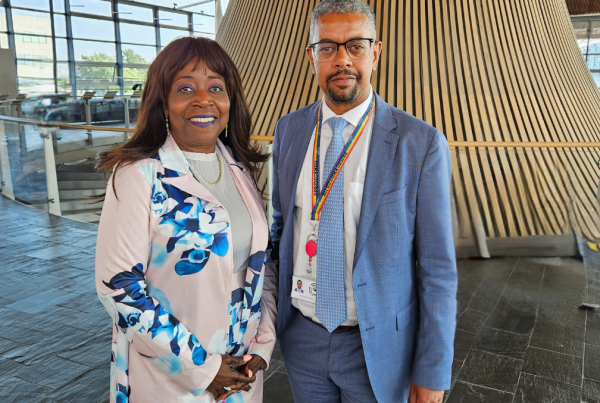Written by Aduke Onafowokan, MD and Founder of Inclusivitii
The UK is unarguably a multicultural society with a diverse population of people with differing identities, values and traditions. However, multiculturalism can often be seen as a ´┐Żbenchmark´┐Ż within an organisation and the benefits forgotten.
Promoting and integrating different cultures leads to new innovations, fosters rich communication and reaches a wider audience. By fully embracing multiculturality, organisations increase their sense of wellbeing, fun and solidarity. Overall, it can help employees to feel more engaged with the wider world. One of the greatest examples is L´┐ŻOreal which has transformed its business and was named one of the world´┐Żs top 10 companies by the 2020 Diversity & Inclusion Index, contributing to its success.
The International Federation of Library Associations and Institutions (IFLA) defines “Multiculturalism” as the co-existence of diverse cultures, where culture includes racial, religious, or cultural groups and is manifested in customary behaviours, cultural assumptions and values, patterns of thinking, and communicative styles.
According to the United Nations, cultural diversity is a driving force of development, not only with respect to economic growth, but also as a means of leading a more fulfilling intellectual, emotional, moral and spiritual life. At the same time, it recognises that acceptance and recognition of cultural diversity are conducive to dialogue among civilizations and cultures, respect and mutual understanding.
Over the past year, conversations about diversity and inclusion have expanded and deepened across the world. Communities and corporations have stepped up intention and action-oriented work to foster more inclusion and diversity at all levels and some of the dividends of this work are already moving us all forward.
However, it is critical not to mistake inclusion for sameness and retain the need to understand and celebrate diversity for what it is – diversity.
The World Day for Cultural Diversity for Dialogue and Development provides us with an opportunity to deepen our understanding of the values of cultural diversity and to further our understanding of the people that form our communities.
For organisations, this ongoing dialogue is critical for promoting inclusion and diversity, to create the space for safe conversation, authenticity and individuality. As our focus on promoting inclusion and diversity heightens, here are four tips to help organisations develop a more positive mindset so that multiculturalism is celebrated rather than just a target to reach.
1. Encourage Conversations:
Encourage conversations about individual experiences and identities – it is okay to be unique and have different experiences and there is joy in creating space for these experiences to be shared and understood. Team leaders can be especially impactful here by inviting team members to share their unique experiences and perspectives with other team members during brainstorming or strategy sessions. Having the opportunity to show how our views have been shaped by our unique experiences is a great way to foster inclusion and promote positive understanding of each other, especially those who come from generally underrepresented communities.
2. Celebrate Diversity:
This can be tricky as it may come across as being too obvious if it is seen as a tick box exercise, however genuinely tapping into events and activities that mean a lot to your people can be a powerful tool for motivation and belonging. This can be done through fact finding activities to identify the authentic ways that cultural diversity can be celebrated and highlighted and how these activities can be woven into the fabric of the organization’s culture. And these celebrations do not always have to be massive clusters of events, but thoughtful recognition and acknowledgement of culturally relevant events and creating the space for those who want to participate to join in freely.
3. Role Modelling:
Organisational culture is shaped in part by how leaders react, what they prioritise and what they pay attention to. Much of how your people react to diversity will be shaped by how leaders react to diversity. Using inclusive language that signals valuing diversity and difference is a great way to show that this is something that your organization believes in. No matter how effective your diversity and inclusion are, if your people sense that the leaders are not on board, they also will adopt a lackluster attitude to engaging with diversity and inclusion initiatives. An example is how well leaders engage with employee resource groups, and to what extent they are part of the conversation at this level, how visible are they, do they stay for the entire duration of events, or ´┐Żpop´┐Ż in. It really, all starts with leadership and sadly often ends with leadership.
4. Leveraging Multiculturality:
Inclusion is defined as welcoming and engaging difference. A lot of organisations and their leaders do well with welcoming or aspiring to welcome diversity, however the leveraging aspect can be trickier. Rather than just having diversity for the sake of having diversity, diversity needs to be welcomed and engaged, inviting the participation of diverse perspectives in decision making processes can truly bring to life the power of diversity holds. Perhaps the best way to celebrate multiculturalism is to use it, to make your business solutions more inclusive, tap into new markets, explore new opportunities and in the process build an inclusive, inspiring work culture that enables everyone to be their best.




